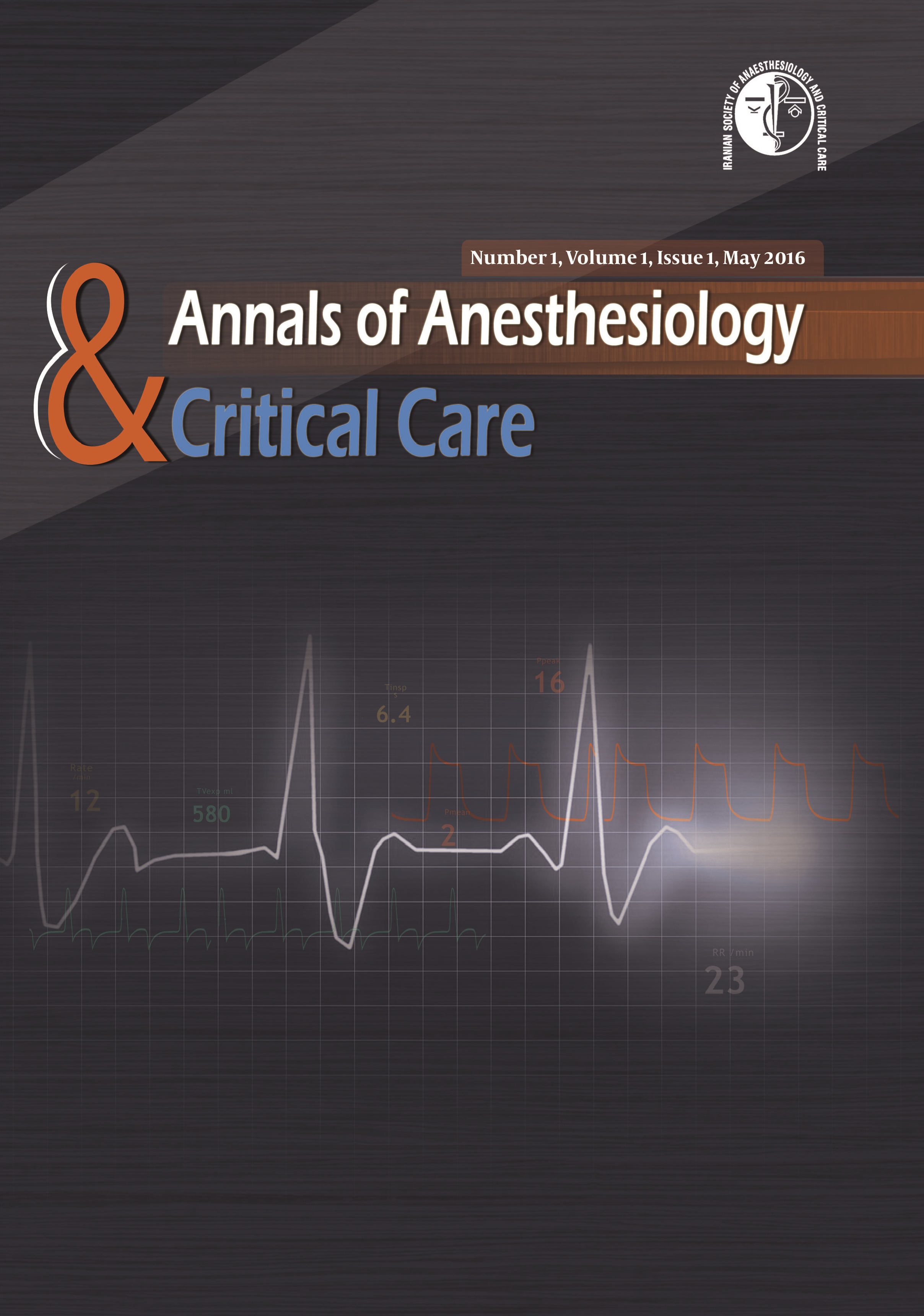Evaluation of Maternal and Fetal Hemodynamic Alterations in Delivery in Epidural and Combined Spinal-Epidural Analgesia: A Randomized Clinical Trial
Annals of Anesthesiology and Critical Care,
Vol. 4 No. 1 (2019),
1 April 2019
,
Page 1-6
Abstract
Background: The pain of vaginal delivery is considered as the worst experience in women life that negatively affects mother and fetus. The most important methods advised by anesthesiologists for pain reduction include epidural and combined spinal-epidural analgesia. The ideal method provides convenient pain relief and guarantees maternal and fetal safety, simultaneously. Fetal heart rate (FHR), fetal movement (FM), and maternal hemodynamics (i.e. blood pressure (BP), heart rate (HR), and SpO2) monitoring are the most available ways for controlling the fetus and mother’s conditions during the delivery process.
Methods: This randomized-blinded clinical trial was performed on 100 pregnant women (50 cases in each group) during labor under epidural or combined spinal-epidural analgesia using lidocaine, fentanyl, and bupivacaine. FHR, FM, BP, HR, and SpO2 were monitored and recorded by blinded nurses. Data were analyzed by SPSS 22.
Results: There were no significant differences in FHR, FM, and Apgar scores between the two groups. No significant difference was found between the two groups in maternal hemodynamics. Generally, FHR, maternal BP, and HR were in the normal ranges. The C/S rate was lower in the epidural group but not statistically significantly.
Conclusions: In our survey, epidural and combined spinal-epidural analgesia were comparable in terms of FHR, FM, and maternal hemodynamics. Therefore, there is no priority in using each of the methods. The monitoring of FHR and maternal hemodynamics is essential during analgesia. It is suggested that further surveys evaluate the incidence and causes of C/S after analgesia.
- Epidural Analgesia, Combined Spinal-Epidural Analgesia, Fetal Heart Rate, Fetal Movement, Hemodynamic
How to Cite
- Abstract Viewed: 67 times
- pdf Downloaded: 24 times
